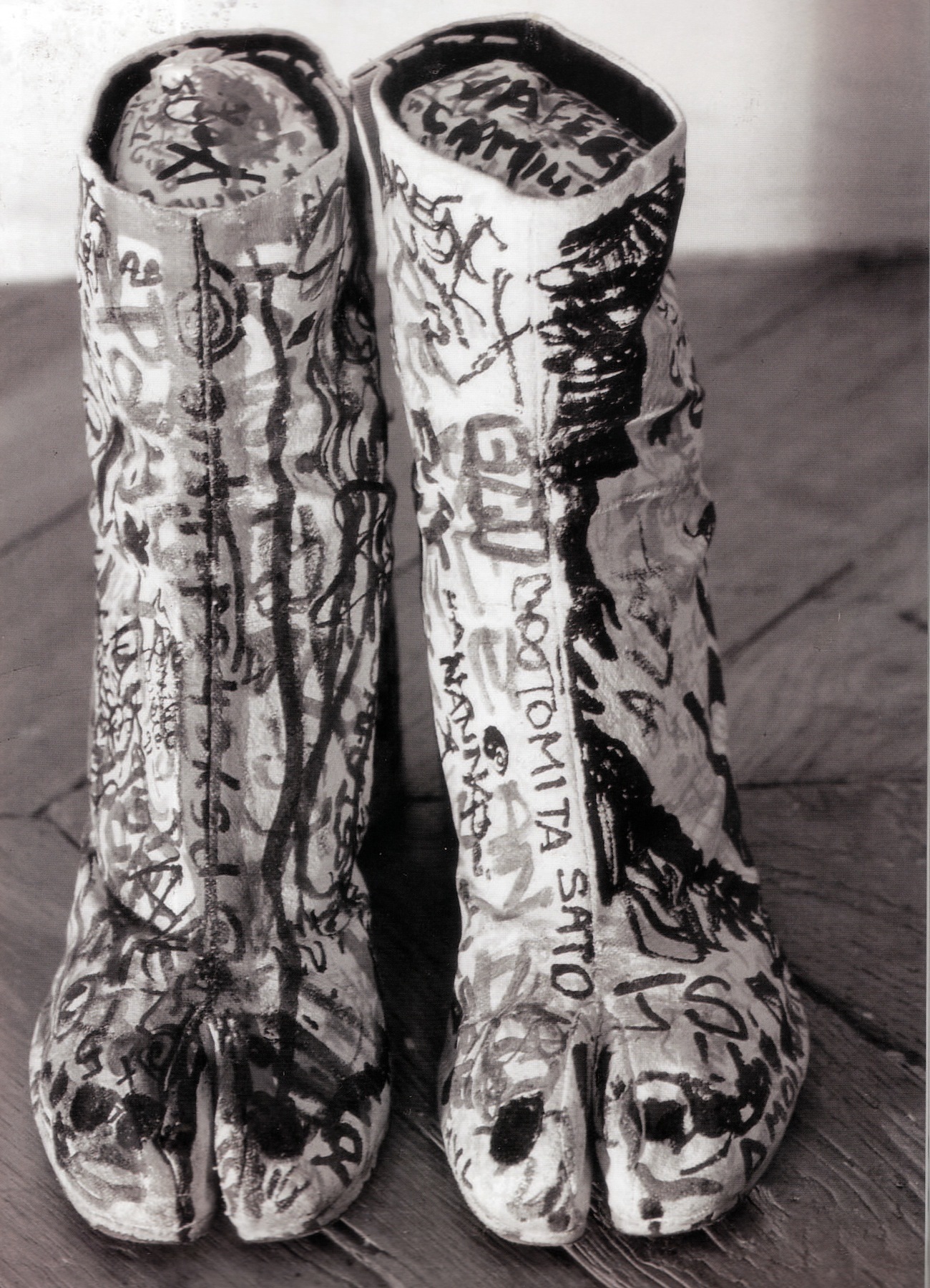In 1988, Martin Margiela presented his debut collection. Many echoes of the Belgian maverick’s early avant-garde offerings are still present in his house’s ground-breaking designs, but perhaps none of these initial ideas are as iconic as the Tabi — a split-toed shoe that separates wearer’s big toe from their others. For the past 25 years, the cloven-toed creation has become synonymous with the label and has appeared newly reimagined season after season. The style is presently featured in MoMu Antwerp’s exhibition Footprint: The Track of Shoes in Fashion and last year Relish — a retail space in Washington, DC — hosted a historical exhibition of the house’s iconic hoof. But the Tabi’s roots precede Margiela’s interpretation of the style, and the split-toe has left its unique footprint far beyond Antwerp.
Tabi’s origins actually date back to 15th century Japan, when the island nation first began importing cotton from China. This enabled the mass production of socks, which — in order to be worn with the country’s traditional thonged sandals — were developed with divided toes. These socks, called Tabi, flourished during subsequent years, and regulations for Tabi colors were developed in keeping with Japan’s hierarchical societal structure.
Though Margiela’s first Tabis were doused in red paint to make footprints more visible (and the stains were later transformed into a waistcoat look that opened his next show in 89), traditional Tabi sock color was a sign of their wearer’s rank, or an indicator of an occasion. It was chill for common people to rock traditional indigo blue Tabi, while white is typically reserved for weddings and tea ceremonies. Multi-colored or patterned Tabi were said to only have been worn by performers, while samurai were permitted to wear any sock color (save purple or gold). Early samurai even adapted their Tabi for battle, kitting out the cotton creations with iron plates.
But perhaps the most notable Tabi adaptation came at the turn of the 20th century, when thanks to the mass production and development of rubber, the first sneakers became widely available. In Japan, Jika-tabi — or “Tabi that contact the ground” — reimagined the traditional socks as light and durable boots. Shōjirō Ishibashi, the founder of major tire company Bridgestone, is credited with this rubber soled creation.
Early models of Jika-tabi date just prior to WWII, but the style didn’t hit the States until Shigeki Tanaka won the 1951 Boston Marathon in a pair of split-toed Tabi sneakers produced by Onitsuka, a Japanese footwear company today known as Asics. Many Japanese companies sought to capitalize on Tanaka’s win by producing more Tabi models, like Onitsuka’s own “marathon Tabi”, but these designs never really took off and most of the models were discontinued. By the time imported Asics found shelf space at Phil Knight’s Blue Ribbon Sports, the split toes were nowhere to be found.
FootPrint – Customized ‘Tabi’ boot, Maison Martin Margiela S/S 1990 from MoMu Fashion Museum Antwerp on Vimeo.
Blue Ribbon Sports eventually became Nike, which launched its own Tabi-ish design in 96. The Air Rift is an experimental sneaker-sandal hybrid with a stretchy elastic strap and super thick rubber sole, and was popularized by celebrities like Madonna. Nike credits the shoe’s design to barefoot Kenyan distance runners, and debuted the first Air Rift model in the colors of the Kenyan flag. But after a mixed response to its strange design, it was all quiet on the Air Rift front for nearly 20 years (although the sneaker remained a cult eBay hit). In 2014, Nike began reintroducing limited runs of the shoe. No doubt buoyed by the Health Goth movement, these newer colorways like the blackout have sold better than their funky predecessors.
Even though the style has persisted both on and off the catwalk for literal centuries, many people still find the idea of a split-toe psychologically unsettling. Yesterday, Lena Dunham posted an Instagram of her dad rocking a pair of Jinji socks, asking “Is anyone gonna arrest him for this?” When Perez Hilton posted a pap photo of Sarah Jessica Parker in a pair of Margiela’s own Tabis (his verdict? “Gag!”) his commenters didn’t hold back their hatred for, as one called the style, “a true camel toe.”
Yet in contrast to their often unpopular public perception, Tabis keep coming back in fashion. Prada incorporated soft split-toe leather booties in Spring/Summer 2013. Thom Browne’s recent samurai suiting featured ankle-length white Tabi socks. The shoes have made for some seriously compelling images, too. Think of Mark Borthwick’s numerous, now-iconic snaps of a young Chloe Sevigny sporting Margiela’s most iconic styles, including black Tabi on the beach styled with an anklet. So what makes the split-toe so appealing? For the Japanese gardeners and construction workers that still wear Jika-tabi, it’s the shoes’ light, durable grip. For the fashion set, perhaps it’s the Tabi’s enduring aesthetic strangeness.
Presently, engineers are adapting the 15th century style for a bold new future. A few years back, Asics began working with JAXA, essentially the Japanese NASA, to develop new footwear for Japanese astronauts. These styles for the International Space Station included ultra-lightweight Tabi sneakers. Featuring an enhanced grip for zero gravity travel and expansive fabric to fight muscle constriction, these intergalactic Tabis might very well be the footwear of the future — whether we like them or not.
Credits
Text Emily Manning
Image via Flickr Creative Commons
